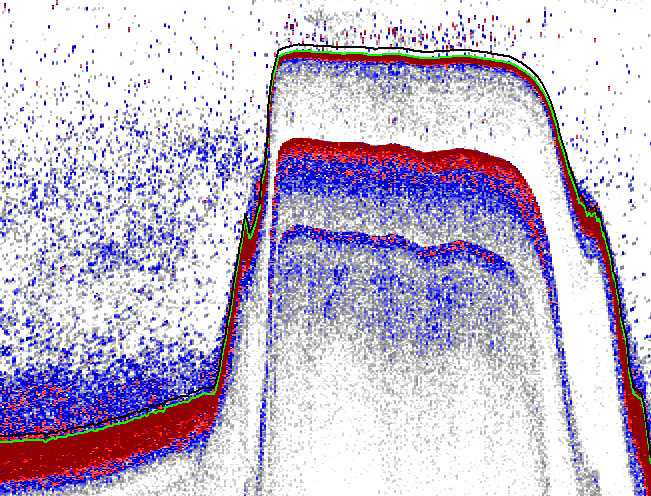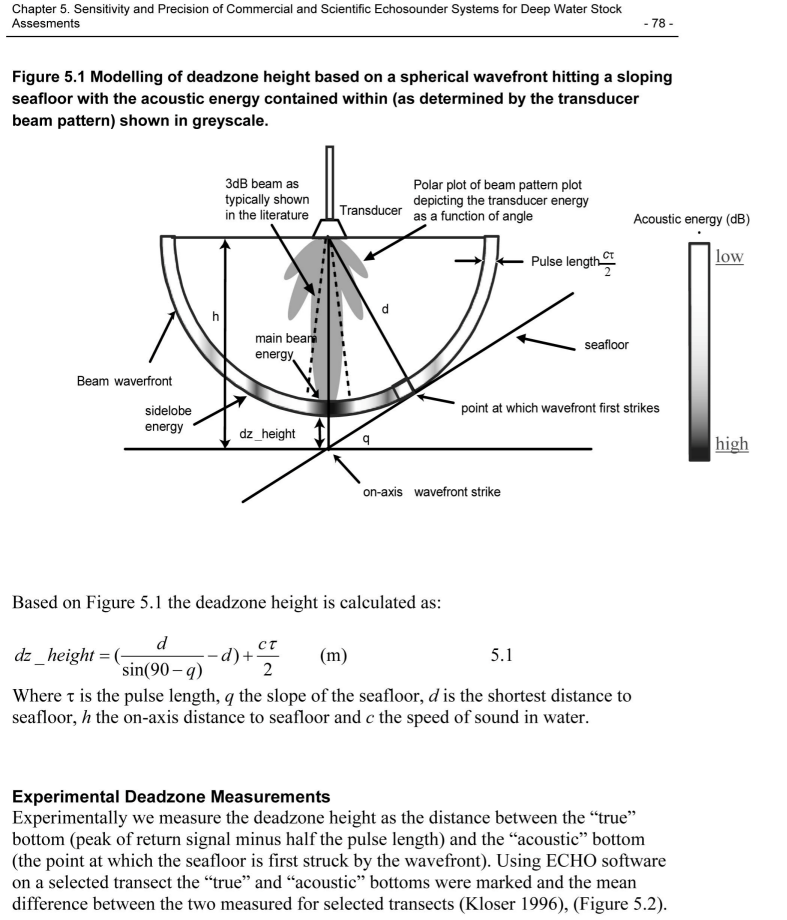Acoustic beam deadzone - referenced
The acoustic beam deadzone is an hydroacoustic issue that may affect biomass estimation.

Figure 1: Deadzone between the acoustic bottom and a bathymetric bottom. The green line is an edited bottom line pick. A black line is 1.5 m (one pulse length) above the bottom line pick. A deadzone lies between the two lines. The echogram color display minimum is -79 dB. In this example, one pulse length (spanning about 7 samples) is used for illustration purposes only.
The deadzone is an area on an echogram where biomass within the beam is difficult to distinguish from the bottom echo. The deadzone is caused by the acoustic beam reverberating off the side of a sloping section of the bottom and occurs most prominently in areas with steep bottom topography.
The Deadzone estimation operator allows you to create echograms that replace the "acoustic bottom" signals in the deadzone with the average volume backscatter value of samples in a layer above the deadzone, i.e. it replaces sample values influenced by the "acoustic bottom" with values based on estimated biomass.
The operator is designed to support techniques described by Kloser (1996).
Simmonds and MacLennan (2005) discuss the topic "Integration near the seabed". They consider the ‘deadzone’ for cases of the acoustic beam perpendicular to a horizontal seabed and to a seabed slope. They also discuss the traditional corrections and assumptions for fish in the deadzone and the impacts on estimates of abundance.
An example of experimental deadzone measurements for a sloping seafloor is in a report by Kloser and Ryan et al (2001). The screenshot (below) displays their calculations from page 78 of the report. For a 38 kHz system where the pulse length is 3 ms, Kloser and Ryan et al (2001) calculated a mean experimental deadzone height of 25 m for a seafloor slope of 16 degrees.

See also
Examples of echogram interpretation
Side lobe interference
Side lobe reflection